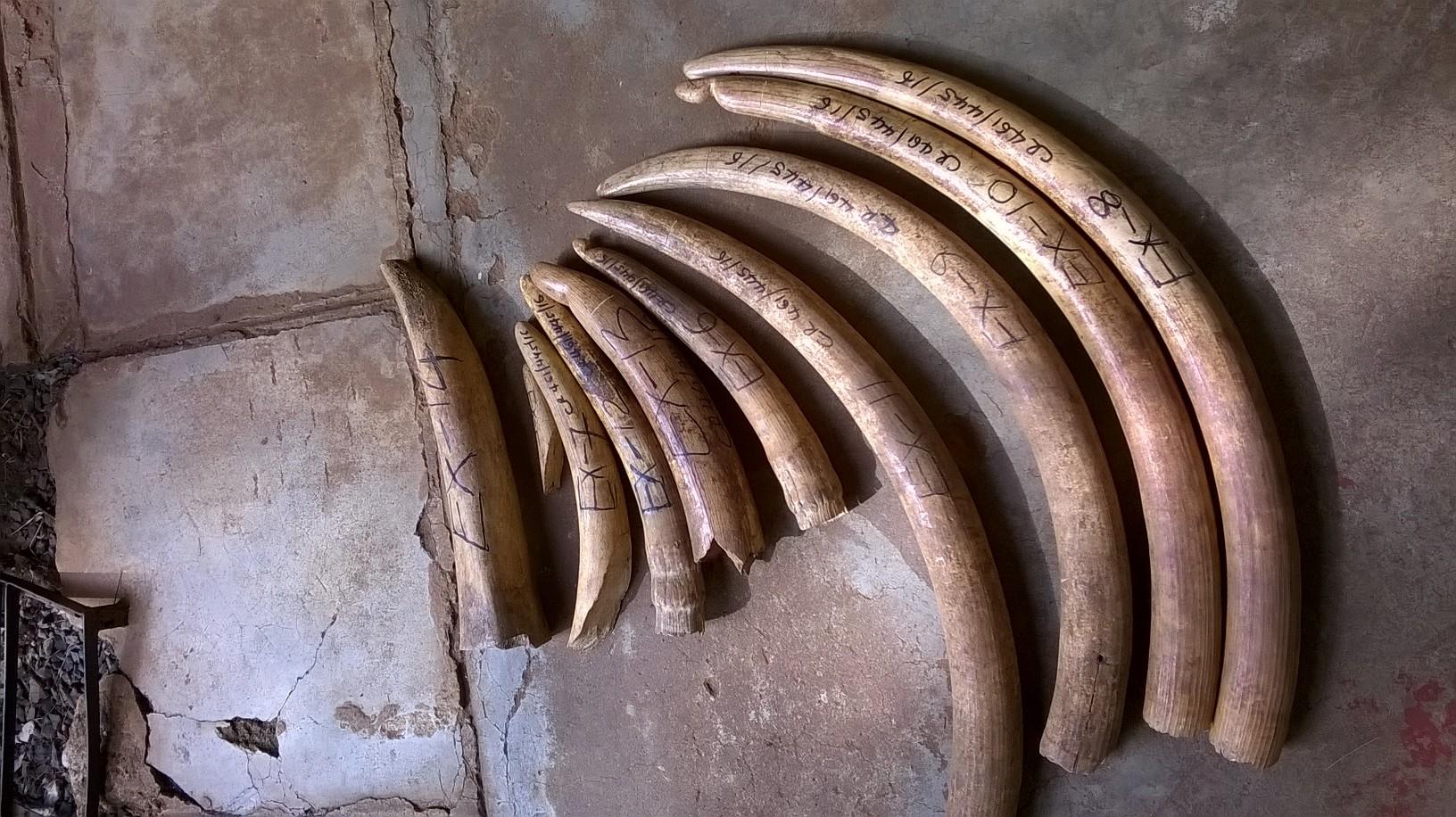Jumbo tug of war between Southern and East Africa
Debate over whether Africa’s elephant-hosting countries should be allowed to sell stockpiled ivory splits the continent

By Evelyn Makena for People Daily in Kenya
Restrictions on ivory trade have pitted nations in Southern and East Africa against each other as the two regions disagree on whether to tighten or relax them. Led by Zimbabwe, nations in the South are pushing for a lift on the ban on ivory trade and of restrictions on elephant hunting in a move that has not augured well with environmentalists and countries in East Africa, including Kenya.
At the inaugural UN Environment/African Union Wildlife Economy Summit held in June this year in Victoria Falls, Zimbabwe, leaders from five Southern African countries announced their commitment on this move during the global environmental forum of Convention on International Trade in Endangered Species of Wild Fauna and Flora (CITES COP 18) in Geneva, Switzerland. Zimbabwe, Botswana, Namibia and Zambia, which with Angola form the Kavango-Zambezi Transfrontier Conservation Area (Kaza), restated their determination to lobby CITES, the body that regulates international wildlife trade, to be allowed to commercially trade in ivory products. They argue that proceeds from ivory sale will be reinvested in initiatives that enhance conservation and relieve protected areas of excess elephant populations that contribute to rampant human wildlife conflict.
“Zimbabwe, as with other African countries pursuing in situ wildlife conservation, requires significant funding, for the conservation agenda. Communities that are living adjacent to protected areas continue to experience unprecedented human-wildlife conflicts.
“They risk being maimed or killed and their crops destroyed. They must experience the value and developmental benefits of living with, and conserving wildlife,” said Emmerson Mnangagwa, President of Zimbabwe.
Conversely, East Africa wants the restrictions on ivory trade enhanced to offer maximum protection for the African elephants. Along with seven countries from the region, Kenya presented a proposal to CITES in December last year to have all African elephants listed in Appendix 1 (list of most endangered species) for enhanced protection. Four countries from the South, on the other hand, presented a proposal to relax trade restrictions on all jumbos. Zambia, whose elephants are listed on Appendix 1, want their jumbos listed on Appendix 2 (list of species not threatened with extinction, but whose trade must be controlled) and trade restrictions lifted. Currently, a majority of the African countries have their elephants listed on Appendix 1, which does not allow for any trade of elephant products.
Only Zimbabwe, Botswana, Namibia and South Africa have their elephants listed on Appendix 2, meaning they are allowed to have limited trade such as export of live animals. But now these countries are pushing for complete removal of restrictions to allow for ivory sale. The Southern bloc hosts over 50 per cent elephant populations in Africa, a fact, they say, that bears testimony to the region’s success in championing successful sustainable conservation. With a population of 130,451, Botswana has the largest elephant numbers in Africa. Zimbabwe has 84,000 elephants against a carrying capacity of 54,000. The country has accumulated a huge ivory and rhino horn stockpile it estimates to be worth Sh61.7 billion. Consequently, it is pushing for a ‘one-off ivory sale’ to clear the stockpile accumulated due to natural attrition, with proceeds channelled to maintenance of its protected areas for the next 20 years.
There are fears by Kenya that such a move would stir global demand for ivory, stimulate renewed illegal trade and increase incidences of poaching. There is also the concern that lifting the ban will lead to further decline of elephant populations and may eventually render the species extinct. Conservationist and CEO of Wildlife Direct, Dr Paula Kahumbu, says that the 2008 one-off sale led to catastrophic slaughter of elephants and put the species population in jeopardy. “We fully back the proposal for the up-listing of all African elephants to Appendix 1. This will send a crystal clear message to buyers and sellers of ivory. Our message is simple: no market, no trade,” says Kahumbu.
In 2016, Kenya burnt 105 tonnes of ivory, showing its commitment to curbing illegal wildlife trade and protecting its elephants, currently estimated to be 26,000 and are threatened with extinction. The process saw the country forfeit an estimated Sh15.4 billion potential income. Previously, CITES allowed two “one-off ivory sales” in 1999 and 2008 in countries with elephants on Appendix 2. “The agreement was that they could not ask for another one-off sale until nine years later. Since the time has lapsed, there is a window for countries to request for it during COP 18,” said Ivonne Higuiro, Secretary General, CITES. For now, the fate of the African elephant lies with the 183 CITES parties in Geneva. The final decision will be made through a voting process that requires a two-thirds majority.

This article is reproduced here as part of the Giants Club African Conservation Journalism Fellowships, a programme of the charity Space for Giants and supported by the owner of ESI Media, which includes independent.co.uk. It aims to expand the reach of conservation and environmental journalism in Africa, and bring more African voices into the international conservation debate. Read the original story here.
Join our commenting forum
Join thought-provoking conversations, follow other Independent readers and see their replies
Comments
Bookmark popover
Removed from bookmarks